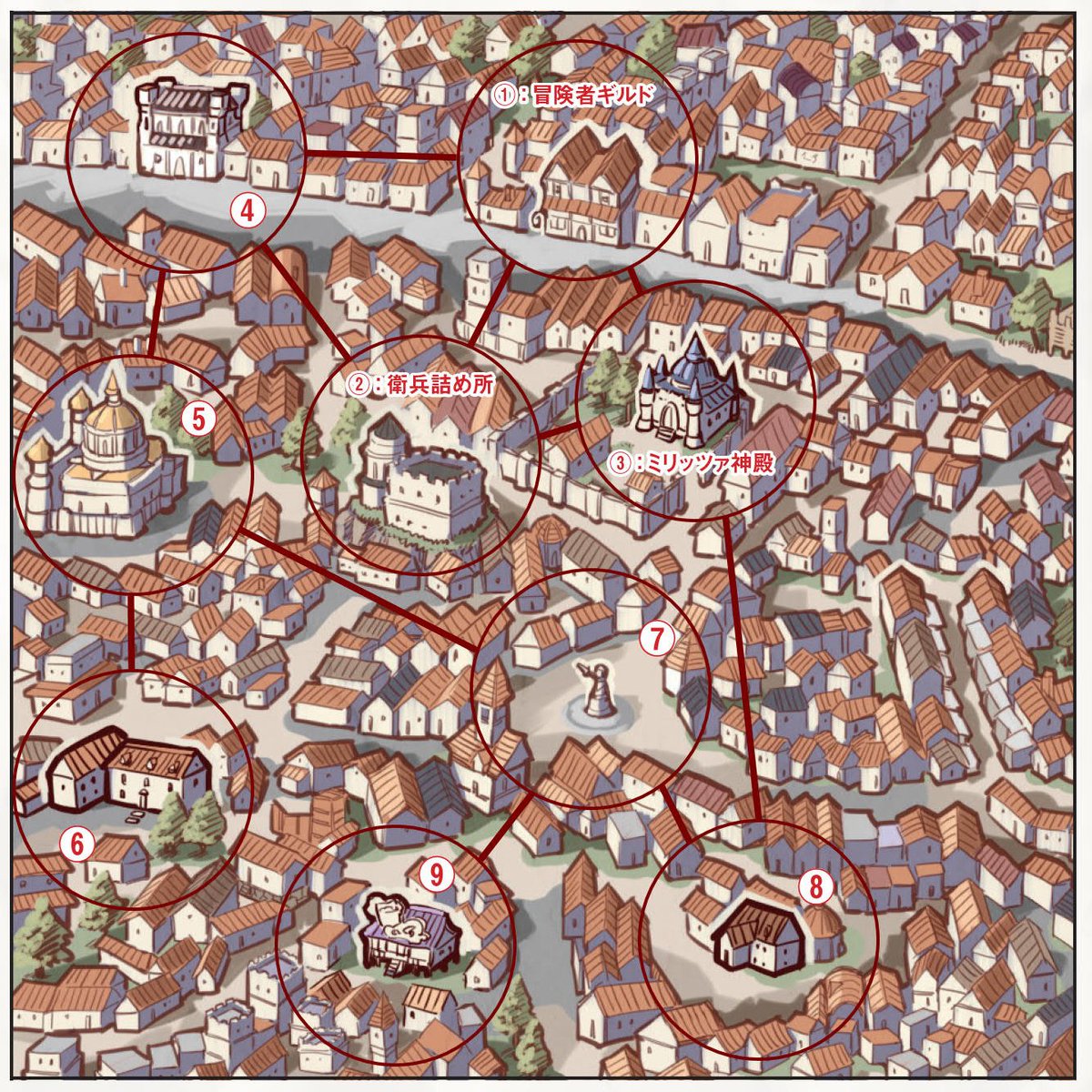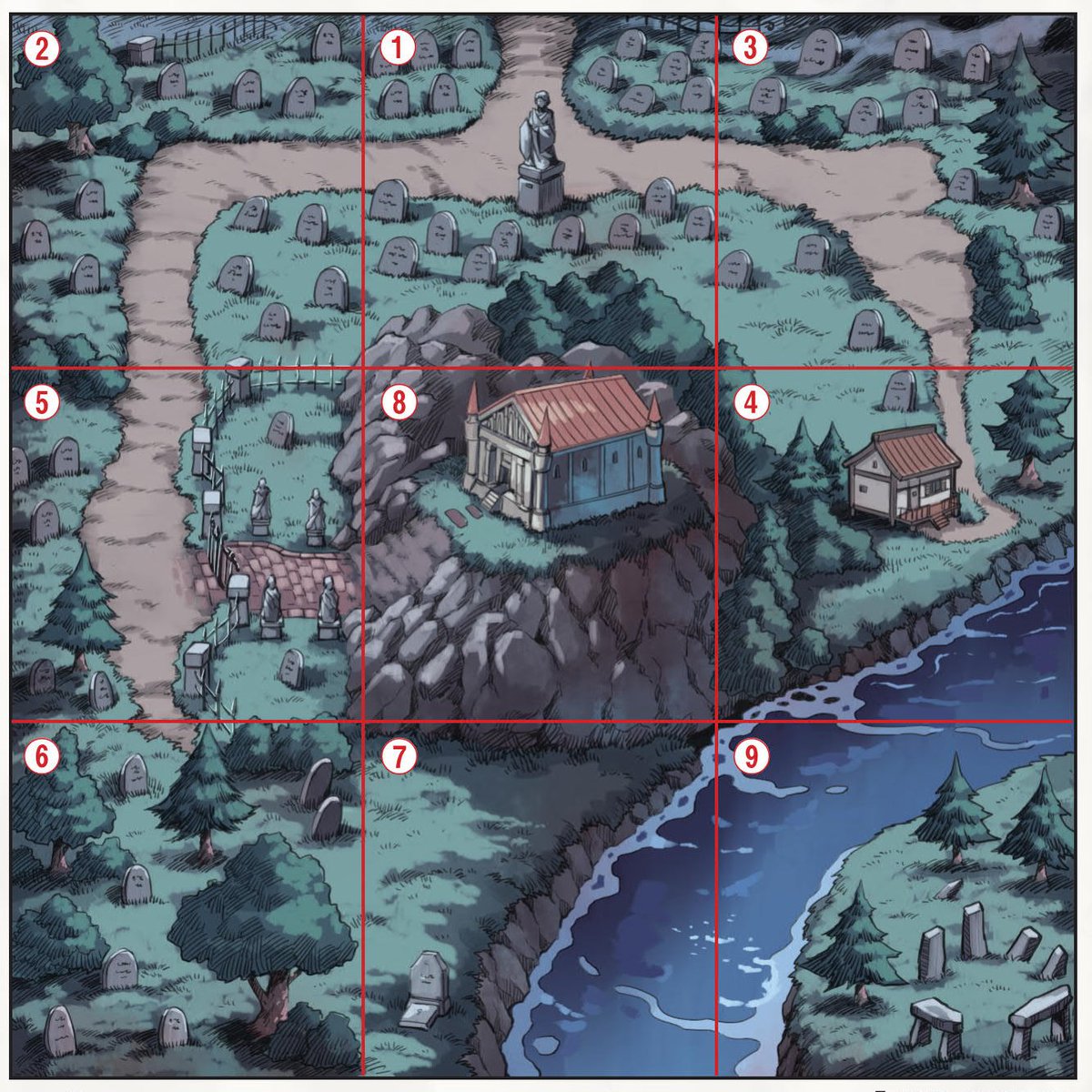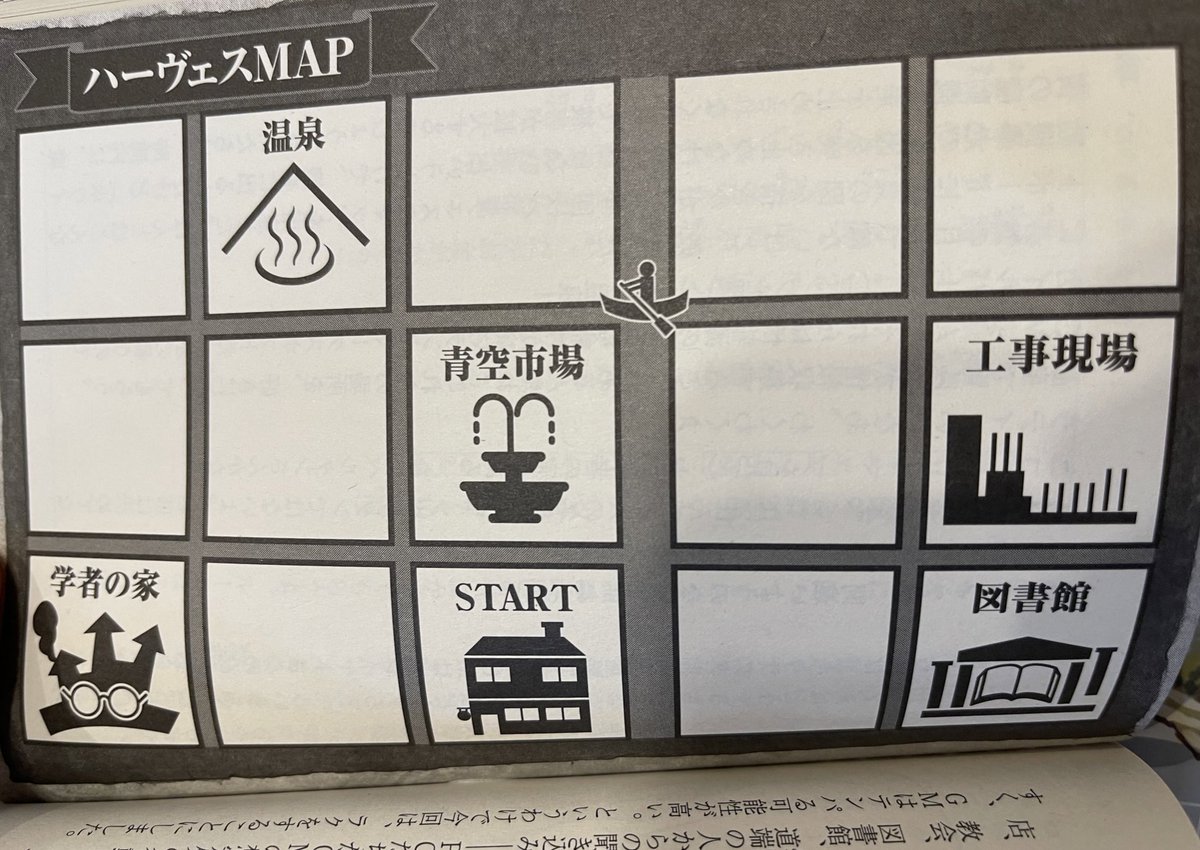Iosue
Legend
So when random bits of a hell dimension show up and menace your post-apocalyptic civilization, what kind of adventurer infrastructure might spring up to deal with that? Here we find out, with Adventurers and Related Organizations. In 2.0, Adventurers Guilds were simply A Thing, common, competing organizations that dealt with the dangers endemic to Terestier. In 2.5, they're given a bit more background and structure.
On Alfleim, Adventurers Guilds are not just independent organizations, but part of a network of guild branches, with the Guild Headquarters located near the Wall of the Abyss. As a result, adventurers can report their successes to their affiliated guild, and this information will be spread out to the other guild branches. Thus any rank and recognition adventurers get from their local guild will transfer to other adventurers guilds as well. However, while guilds are part of an information network, their finances are done by independent accounting. Thus, each guild is responsible for keeping its doors open, and this creates a certain degree of competition among guilds in the bigger cities. There, it's not uncommon to see multiple guilds lining both sides of a street.
Guilds make revenue first by receiving a retaining fee when someone requests guild help. It is from this money that guilds pay adventurers their commissions. They also buy unneeded items or spoils brought in by their adventurers, and resell them to those that want them. Accordingly, adventurers who can frequently bring in valuable items for the guild to redistribute are highly valued. The profits from such transactions allow the guilds to cover adventurer rewards for requests from those in need who can't pay the usual fees. Helping the weak is, after all, the raison d'etre for guilds in the first place.
In many cases, guilds will also operate an in-house tavern/inn for adventurers. That's right. You not only meet in an inn, that inn is your guildhouse! The first floor will be a tavern or eatery where adventurers can trade information as they look at the job board, and then there will be rooms to stay in on the second floor. Guilds offer these services to adventurers at low prices. Guilds also offer basic financial services to adventurers, giving no-collateral, no-interest loans of up to 300 G, or in the case of resurrection, up to the full cost of the resurrection. They have great security for these loans, because repayment is taken straight out of adventurers' rewards. And adventurer can also arrange with the guild for a rescue (or corpse retrieval) party to be sent if they do not return from a job after a set number of days.
After the fall of the Magic Civilization, magic-users, who were the ones in power when the civilization collapsed, began to be persecuted and excluded from communities. Magicians Guilds were then formed to help protect them. They were closed, secret societies until the Diabolic Triumph. By working to help people at that time, and making common cause and networking with the adventurers guilds, they came to be accepted, and even depended on, by the common people...if still a little feared. On each continent, there is also tower called a "Sword of Knowledge", located far away from inhabited areas, where particularly gifted magic-users can train.
Temples to the gods are found in almost all humankind settlements, in particular those of Lyfos and Tidan. Like adventurers guilds, temples do not fight with the temples of other gods, although there does exist some competition and differences of opinion between them. Still the temples of the gods associated with Lumiere do have an adversarial relationship with temples to the savage gods of Ignis, and will often promote the driving off of Barbaros.
Magitec Associations exist to promote and guide the use of magitec, and work for the restoration of much of what lost after the Diabolic Triumph. They often cooperate with and invest in adventurers guilds, and it is not unusual to see them share the same building.
On the surface, Antiquity Guilds exist to collect and redistribute remains collected from the Magic and Magitec Civilizations. In reality, they are fronts for Thieves Guilds. This is typically known by the local authorities, but implicitly allowed because Thieves Guilds are often located in the poor parts of town, and help keep the peace there. Adventurers Guilds are the most stand-up organizations there are, but they have a give-and-take relationship with the Thieves Guilds in order to maintain underground information networks. The Thieves Guilds also send jobs to the Adventure Guilds.
As mentioned in my previous post, aside from helping deal with Shallow Abysses, the two primary jobs of adventurers are ruin exploration and monster fighting. Ruin exploration is the most well-known of adventurers' jobs. Because clearly held territories are relatively small, most ruins are found in extra-territorial areas, and thus finders-keepers rules prevail. Adventurers can keep whatever they find, and anything they don't need they can sell to the Guild. Ruins to be explored are often found and reported to the Guild by people called Finders. Finders are independents who locate the ruins, and may even guide adventurers there, but generally do not enter themselves. They receive a fee of at least 100 G, or even higher if the site looks promising, paid (by the adventurers, through the guild) once the exploration expedition returns.
When it comes to monster fighting, most large settlements are protected by Guardian Swords, which send out a protective magical barrier that keep Barbaros away. But this barrier is stronger the stronger the Barbaros is, so conversely it is not so effective against weaker Barbaros like goblins and bolgs. This is where adventurers come in. Barbaros leaders often have Sword Shards, which if collected after defeating those leaders, can be turned in for money. But more commonly, Sword Shards are simply gifted back to the settlement so that it can maintain its Guardian Sword. In return, adventurers get Prestige.
(Prestige is not really explained in Rulebook I, so a quick summary from Rulebook II. Prestige points are accumulated from turning Sword Shards and Abyss Shards (and at the GM's discretion). They can be turned in purchase ranks within Guild or unique special/magic items.)
That concludes the Adventurers section. Next up, a look at Alfleim, the continent that is the setting of SW 2.5!
On Alfleim, Adventurers Guilds are not just independent organizations, but part of a network of guild branches, with the Guild Headquarters located near the Wall of the Abyss. As a result, adventurers can report their successes to their affiliated guild, and this information will be spread out to the other guild branches. Thus any rank and recognition adventurers get from their local guild will transfer to other adventurers guilds as well. However, while guilds are part of an information network, their finances are done by independent accounting. Thus, each guild is responsible for keeping its doors open, and this creates a certain degree of competition among guilds in the bigger cities. There, it's not uncommon to see multiple guilds lining both sides of a street.
Guilds make revenue first by receiving a retaining fee when someone requests guild help. It is from this money that guilds pay adventurers their commissions. They also buy unneeded items or spoils brought in by their adventurers, and resell them to those that want them. Accordingly, adventurers who can frequently bring in valuable items for the guild to redistribute are highly valued. The profits from such transactions allow the guilds to cover adventurer rewards for requests from those in need who can't pay the usual fees. Helping the weak is, after all, the raison d'etre for guilds in the first place.
In many cases, guilds will also operate an in-house tavern/inn for adventurers. That's right. You not only meet in an inn, that inn is your guildhouse! The first floor will be a tavern or eatery where adventurers can trade information as they look at the job board, and then there will be rooms to stay in on the second floor. Guilds offer these services to adventurers at low prices. Guilds also offer basic financial services to adventurers, giving no-collateral, no-interest loans of up to 300 G, or in the case of resurrection, up to the full cost of the resurrection. They have great security for these loans, because repayment is taken straight out of adventurers' rewards. And adventurer can also arrange with the guild for a rescue (or corpse retrieval) party to be sent if they do not return from a job after a set number of days.
After the fall of the Magic Civilization, magic-users, who were the ones in power when the civilization collapsed, began to be persecuted and excluded from communities. Magicians Guilds were then formed to help protect them. They were closed, secret societies until the Diabolic Triumph. By working to help people at that time, and making common cause and networking with the adventurers guilds, they came to be accepted, and even depended on, by the common people...if still a little feared. On each continent, there is also tower called a "Sword of Knowledge", located far away from inhabited areas, where particularly gifted magic-users can train.
Temples to the gods are found in almost all humankind settlements, in particular those of Lyfos and Tidan. Like adventurers guilds, temples do not fight with the temples of other gods, although there does exist some competition and differences of opinion between them. Still the temples of the gods associated with Lumiere do have an adversarial relationship with temples to the savage gods of Ignis, and will often promote the driving off of Barbaros.
Magitec Associations exist to promote and guide the use of magitec, and work for the restoration of much of what lost after the Diabolic Triumph. They often cooperate with and invest in adventurers guilds, and it is not unusual to see them share the same building.
On the surface, Antiquity Guilds exist to collect and redistribute remains collected from the Magic and Magitec Civilizations. In reality, they are fronts for Thieves Guilds. This is typically known by the local authorities, but implicitly allowed because Thieves Guilds are often located in the poor parts of town, and help keep the peace there. Adventurers Guilds are the most stand-up organizations there are, but they have a give-and-take relationship with the Thieves Guilds in order to maintain underground information networks. The Thieves Guilds also send jobs to the Adventure Guilds.
As mentioned in my previous post, aside from helping deal with Shallow Abysses, the two primary jobs of adventurers are ruin exploration and monster fighting. Ruin exploration is the most well-known of adventurers' jobs. Because clearly held territories are relatively small, most ruins are found in extra-territorial areas, and thus finders-keepers rules prevail. Adventurers can keep whatever they find, and anything they don't need they can sell to the Guild. Ruins to be explored are often found and reported to the Guild by people called Finders. Finders are independents who locate the ruins, and may even guide adventurers there, but generally do not enter themselves. They receive a fee of at least 100 G, or even higher if the site looks promising, paid (by the adventurers, through the guild) once the exploration expedition returns.
When it comes to monster fighting, most large settlements are protected by Guardian Swords, which send out a protective magical barrier that keep Barbaros away. But this barrier is stronger the stronger the Barbaros is, so conversely it is not so effective against weaker Barbaros like goblins and bolgs. This is where adventurers come in. Barbaros leaders often have Sword Shards, which if collected after defeating those leaders, can be turned in for money. But more commonly, Sword Shards are simply gifted back to the settlement so that it can maintain its Guardian Sword. In return, adventurers get Prestige.
(Prestige is not really explained in Rulebook I, so a quick summary from Rulebook II. Prestige points are accumulated from turning Sword Shards and Abyss Shards (and at the GM's discretion). They can be turned in purchase ranks within Guild or unique special/magic items.)
That concludes the Adventurers section. Next up, a look at Alfleim, the continent that is the setting of SW 2.5!









